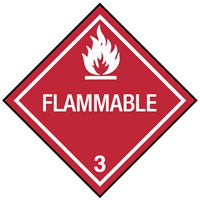
 Print
Print
Chemical Datasheet
SEC-AMYL ACETATE |

|
Chemical Identifiers
| CAS Number |
UN/NA Number |
DOT Hazard Label |
USCG CHRIS Code |
- 626-38-0

|
|
|
|
| NIOSH Pocket Guide |
International Chem Safety Card |
|
sec-Amyl acetate
|
|
NFPA 704
General Description
Colorless to yellow watery liquid with a weak odor of bananas. Floats on water. Produces irritating vapor. (USCG, 1999)
Hazards
Reactivity Alerts
Air & Water Reactions
Highly flammable. Slightly water soluble.
Fire Hazard
Special Hazards of Combustion Products: When heated emits acrid fumes.
Behavior in Fire: When exposed to flames can react vigorously with oxidizing material. (USCG, 1999)
Health Hazard
INHALATION AND INGESTION: Irritates the mucous membrane, depresses the central nervous system, and is a narcotic. Damage to kidney, liver, and lung can occur. Ingestion may irritate gastro-intestinal tract. EYES: Irritation. Skin: Irritation. (USCG, 1999)
Reactivity Profile
SEC-AMYL ACETATE is an ester. Esters react with acids to liberate heat along with alcohols and acids. Strong oxidizing acids may cause a vigorous reaction that is sufficiently exothermic to ignite the reaction products. Heat is also generated by the interaction of esters with caustic solutions. Flammable hydrogen is generated by mixing esters with alkali metals and hydrides. This compound is incompatible with the following: Nitrates; strong oxidizers, alkalis & acids (NIOSH, 2024).
Belongs to the Following Reactive Group(s)
- Esters, Sulfate Esters, Phosphate Esters, Thiophosphate Esters, and Borate Esters
Potentially Incompatible Absorbents
No information available.
Response Recommendations
Isolation and Evacuation
Excerpt from ERG Guide 129 [Flammable Liquids (Water-Miscible / Noxious)]:
IMMEDIATE PRECAUTIONARY MEASURE: Isolate spill or leak area for at least 50 meters (150 feet) in all directions.
LARGE SPILL: Consider initial downwind evacuation for at least 300 meters (1000 feet).
FIRE: If tank, rail tank car or highway tank is involved in a fire, ISOLATE for 800 meters (1/2 mile) in all directions; also, consider initial evacuation for 800 meters (1/2 mile) in all directions. (ERG, 2024)
Firefighting
Fire Extinguishing Agents Not to Be Used: Water may be ineffective.
Fire Extinguishing Agents: Water fog in conjuction with alcohol foam, dry chemical or carbon dioxide. (USCG, 1999)
Non-Fire Response
Excerpt from ERG Guide 129 [Flammable Liquids (Water-Miscible / Noxious)]:
ELIMINATE all ignition sources (no smoking, flares, sparks or flames) from immediate area. All equipment used when handling the product must be grounded. Do not touch or walk through spilled material. Stop leak if you can do it without risk. Prevent entry into waterways, sewers, basements or confined areas. A vapor-suppressing foam may be used to reduce vapors. Absorb or cover with dry earth, sand or other non-combustible material and transfer to containers. Use clean, non-sparking tools to collect absorbed material.
LARGE SPILL: Dike far ahead of liquid spill for later disposal. Water spray may reduce vapor, but may not prevent ignition in closed spaces. (ERG, 2024)
Protective Clothing
Excerpt from NIOSH Pocket Guide for sec-Amyl acetate:
Skin: PREVENT SKIN CONTACT - Wear appropriate personal protective clothing to prevent skin contact.
Eyes: PREVENT EYE CONTACT - Wear appropriate eye protection to prevent eye contact.
Wash skin: WHEN CONTAMINATED - The worker should immediately wash the skin when it becomes contaminated.
Remove: WHEN WET (FLAMMABLE) - Work clothing that becomes wet should be immediately removed due to its flammability hazard (i.e., for liquids with a flash point <100°F).
Change: No recommendation is made specifying the need for the worker to change clothing after the workshift. (NIOSH, 2024)
DuPont Tychem® Suit Fabrics
No information available.
First Aid
Excerpt from NIOSH Pocket Guide for sec-Amyl acetate:
Eye: IRRIGATE IMMEDIATELY - If this chemical contacts the eyes, immediately wash (irrigate) the eyes with large amounts of water, occasionally lifting the lower and upper lids. Get medical attention immediately.
Skin: WATER FLUSH PROMPTLY - If this chemical contacts the skin, flush the contaminated skin with water promptly. If this chemical penetrates the clothing, immediately remove the clothing and flush the skin with water promptly. If irritation persists after washing, get medical attention.
Breathing: RESPIRATORY SUPPORT - If a person breathes large amounts of this chemical, move the exposed person to fresh air at once. If breathing has stopped, perform artificial respiration. Keep the affected person warm and at rest. Get medical attention as soon as possible.
Swallow: MEDICAL ATTENTION IMMEDIATELY - If this chemical has been swallowed, get medical attention immediately. (NIOSH, 2024)
Physical Properties
Flash Point:
89°F
(USCG, 1999)
Lower Explosive Limit (LEL):
1 %
(USCG, 1999)
Upper Explosive Limit (UEL):
7.5 %
(USCG, 1999)
Autoignition Temperature: data unavailable
Melting Point:
-95.44°F
(USCG, 1999)
Vapor Pressure:
7 mmHg
(NIOSH, 2024)
Vapor Density (Relative to Air): data unavailable
Specific Gravity:
0.861 to 0.866
at 68°F
(USCG, 1999)
Boiling Point:
271.4°F
at 760 mmHg
(USCG, 1999)
Molecular Weight:
130.18
(USCG, 1999)
Water Solubility:
Slight
(NIOSH, 2024)
Ionization Energy/Potential: data unavailable
IDLH:
1000 ppm
(NIOSH, 2024)
AEGLs (Acute Exposure Guideline Levels)
No AEGL information available.
ERPGs (Emergency Response Planning Guidelines)
No ERPG information available.
PACs (Protective Action Criteria)
No PAC information available.
Regulatory Information
EPA Consolidated List of Lists
| Regulatory Name |
CAS Number/
313 Category Code |
EPCRA 302
EHS TPQ |
EPCRA 304
EHS RQ |
CERCLA RQ |
EPCRA 313
TRI |
RCRA
Code |
CAA 112(r)
RMP TQ |
| sec-Amyl acetate |
626-38-0 |
|
|
5000 pounds |
|
|
|
(EPA List of Lists, 2024)
CISA Chemical Facility Anti-Terrorism Standards (CFATS)
No regulatory information available.
OSHA Process Safety Management (PSM) Standard List
No regulatory information available.
Alternate Chemical Names
- BANANA OIL
- 1-METHYLBUTYL ACETATE
- PEAR OIL
- 2-PENTANOL ACETATE
- 2-PENTYL ESTER OF ACETIC ACID
- 2-PENTYLACETATE
- SEC-AMYL ACETATE


 Print
Print
